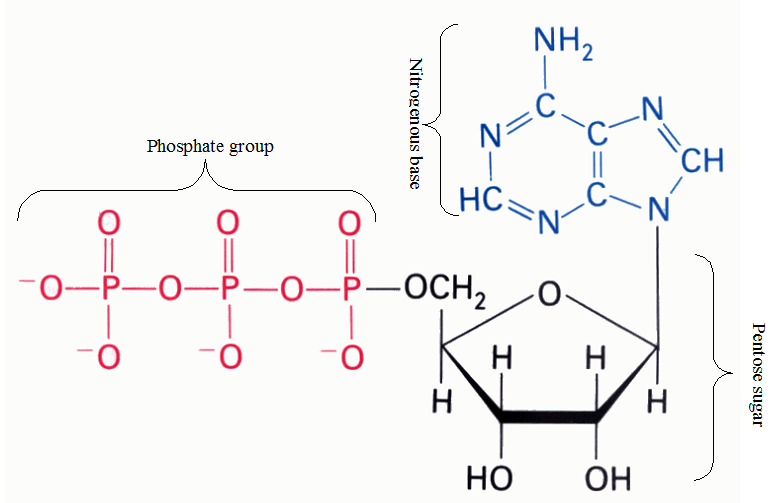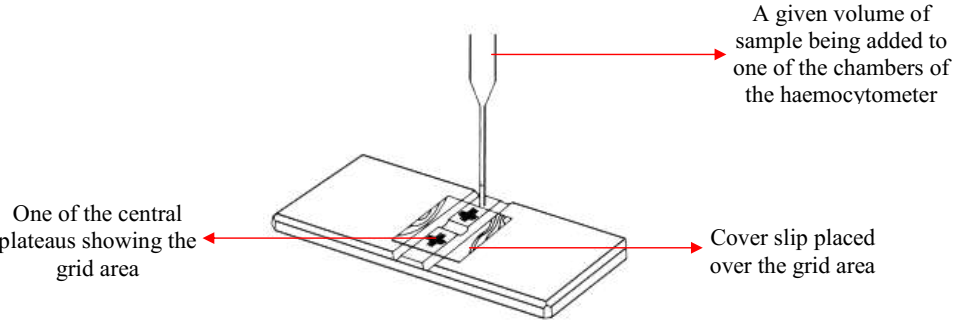Macromolecules are large biological molecules that are made up of repeating smaller biological units generally known as monomers. They are polymers of high molecular weight that are biologically and chemically assembled from simpler precursors (i.e. monomers). The monomers are the foundational constituents of macromolecules; and these smaller biological units are usually held together by strong covalent bonds in chemical reactions that catalyze the biosynthesis of these macromolecules of life.
Monomers are the smaller biological units from which the macromolecules of life are biochemically assembled. The monomeric units or monomers also serve as the basis from which living organisms build or construct supramolecular structures including but not limited to the chromosomes, plasma membrane and bacterial cell wall. It is noteworthy that there is a great variation between the molecular size of macromolecules and their monomers. While macromolecules are larger in size, their monomeric units are smaller.
Every living organism inclusive of microbes and humans are made up of the same kind of macromolecules; and these macromolecules of life are utilized or metabolized and synthesized through specialized biochemical pathways. Macromolecules play a variety of biological roles in every living system or organism. There are mainly four (4) types of macromolecules of life. These macromolecules of life are:
- Nucleic acids
- Carbohydrates
- Proteins
- Lipids
Nucleotides, monosaccharides, amino acids and fatty acids or glycerol are the monomers of nucleic acids, carbohydrates, proteins and lipids respectively (Table 1). These monomers are the major constituents from which the macromolecules of life are derived from. And they also form part of the nutritional components of living organisms inclusive of microbes. Generally, simple molecules (the monomeric units) undergo polymerization to form complex molecules (macromolecules).
Table 1. Macromolecules of life
| Macromolecules | Monomers | Biological function |
| Nucleic acids | Nucleotides | Nucleic acids are the informational macromolecules of the cell, and they are responsible for the storage and transfer of hereditary materials between living organisms. |
| Proteins | Amino acids | Proteins are biological macromolecules that are mainly responsible for the repair of worn out tissues. They also serve a variety of regulatory and transport functions within the cell. Proteins also function as enzymes where they regulate and speed the rate of chemical reactions in biological systems. |
| Carbohydrates | Monosaccharides | Carbohydrates are mainly the sources of energy for the cell. They are mainly made up of carbon, hydrogen and oxygen. |
| Lipids | Fatty acids or glycerol | Lipids serve store energy for the cell, and they also serve as insulators and lubricants in animal cells. |
NUCLEIC ACIDS
Nucleic acids are macromolecules that store, process and transmit hereditary or genetic materials between organisms. They are known as the informational macromolecules of life because they carry gene sequences that are not only passed on from parents to offspring and from one generation to another but which mainly determine the phenotype and genotype of an organism. Nucleic acids are located within the nucleus of the cell; and they direct the activities of the cell especially as it relates to the biosynthesis of other macromolecules such as proteins.
Deoxyribonucleic acid (DNA) and ribonucleic acid (RNA) are the two main types of nucleic acids. DNA is the main genetic material of the cell, and it is the nucleic acid that contain the gene sequences which codes for the synthesis of a particular protein molecule in a cell. RNA is the nucleic acid that takes the genetic information encoded in the DNA and translates it into specific protein molecule in the ribosome.
The phosphodiester bond covalently links the 5ꞌ hydroxyl (OH) group of one nucleotide molecule to the 3ꞌ OH group of another nucleotide in a successive chain during the biosynthesis of a nucleic acid molecule. A nucleoside is a molecule that is composed mainly of a nitrogenous base (purine or pyrimidine) and a pentose sugar covalently linked together. The addition of a phosphate group to a nucleoside i.e. phosphorylation leads to the formation of a nucleotide molecule.
PROTEINS
Proteins are macromolecules that comprises repeating chains of amino acids which are held together by peptide bonds. They are macromolecules that are vital for the repair of worn out tissues in living systems and they also play several roles in the growth of an organism. Proteins occur in all cells and parts of a living organism; and thus they are one of the most abundant macromolecule of life that is found in living systems. There are twenty essential amino acids that are found in all proteins; and proteins are usually the final expression of a gene sequence in a cell.
Proteins can act as chemical messengers in the cell (e.g. hormones); they can act as transporters that convey important molecules from one location to another (e.g. haemoglobin); they can act as regulators of chemical reactions (e.g. enzymes); and proteins also form the integral part of the cells and tissues of living systems.
Proteins exist in four different chemical structures which include the primary structure, secondary structure, tertiary structure and the quaternary structure. However, the biological function of a protein molecule is mainly determined by its tertiary structure which can also be called the three-dimensional (3-D) structure of proteins. And all the protein structures are derived from the primary structure which can also be referred to as the polypeptide molecule.
CARBOHYDRATES
Carbohydrates are macromolecules that are made up of monosaccharides as their monomeric units. They are composed mainly of carbon, hydrogen and oxygen. Carbohydrates mainly serve as sources of energy for the cell as they are metabolized or broken down to release energy required for other cellular and metabolic activities. The monomeric units of carbohydrates are held together by a covalent bond known as glycosidic bond. Carbohydrates are the most abundant macromolecules of life; and they are metabolized in living system through special biochemical pathways (e.g. the glycolytic pathway) to yield energy for a variety of metabolic and cellular activities.
Some carbohydrate also exists in conjunction with other macromolecules such as lipids or proteins where a carbohydrate molecule is covalently linked to another molecule. Carbohydrates that are covalently linked to a lipid or protein molecule are generally known as glycoconjugates e.g. proteoglycans (found commonly on cell surfaces where they act as binding sites for other molecules or substances), glycolipids (which are carbohydrates covalently linked to lipids, and they are commonly found on the membranes of living systems) and glycoproteins (which are carbohydrates covalently linked to proteins, and they are commonly found in cell membranes).
Monosaccharides, disaccharides and polysaccharides are the three major groups of carbohydrates. Monosaccharides are the simplest carbohydrates consisting of single sugar units. It is the simplest form of carbohydrate that cannot be disintegrated or broken down into smaller units; and they are simple sugars that consist of glucose and fructose.
Disaccharides are carbohydrates or sugars that consist of two monosaccharides held together by glycosidic bond. Maltose, lactose and sucrose (table sugar) are typical examples of disaccharides. Polysaccharides or glycans are the most complex carbohydrates. They consist of several monosaccharides that are held together by glycosidic bonds. Starch, glycogen, chitin and cellulose are typical examples of polysaccharides. Starch is the form in which carbohydrate is stored in plants while glycogen is the form in which carbohydrate is stored in animals.
Cellulose which can sometimes be called fibre is a major component of plant cell wall; and it provides structural support to plants. Chitin is the carbohydrate that makes up the exoskeletons of invertebrates such as insects amongst others. Carbohydrates also make up the structural components of bacterial cell wall and other organelles; and they also form part of the connective tissues found in plants and animals. Carbohydrates are generally the main source of energy for most living cells; and they are a major dietary staple for both animals and humans.
LIPIDS
Lipids are macromolecules that are formed from fatty acids or glycerols as monomers; and they are hydrophobic organic compounds i.e. they are insoluble in water. However, lipids are soluble in non-polar solvents such as benzene and chloroform even though they are generally water-hating in nature. Fats and oils, wax, phospholipids and sterols are typical examples of lipids. Fats are found in animals as storage lipids while oils are found in plants. Wax is a type of lipid compound that serves as water repellants on living systems; and they also serve as energy store as well as lubricants because waxes lubricate the surfaces where they are found or produced (e.g. on the skin and hairs of animals).
Generally, lipids serve as insulators in the body of animals and thus they help to keep the body warm especially during cold when they are metabolized. Phospholipids like the sterols are structural lipids that line the cell membranes of living cells; and they also serve as receptor molecules in membranes where they are usually found. Sterols are basically membrane lipids or structural lipids which are found on the cell or plasma membranes of living organisms especially the eukaryotes (e.g. fungi and animal cells).
Cholesterol is a typical sterol found on the cell membrane of animal cells while ergosterol is the sterol found on the cell membrane of fungi. Lipids are major cellular components of living organisms and apart from their energy storage function; lipids also serve a variety of other biological functions such as acting as enzyme cofactors in cellular reactions; acting as signaling molecules in the transport of vital biological molecules from one location to another; and acting as pigments in living cells.
References
Alberts B, Bray D, Lewis J, Raff M, Roberts K and Watson J.D (2002). The molecular Biology of the Cell. Fourth edition. New York, Garland, USA.
Berg JM, Tymoczko JL, Stryer L (2002). Biochemistry (5th ed.). New York, NY: W. H. Freeman.
Brooks G.F., Butel J.S and Morse S.A (2004). Medical Microbiology, 23rd edition. McGraw Hill Publishers. USA.
Campbell, Neil A.; Brad Williamson; Robin J. Heyden (2006). Biology: Exploring Life. Boston, Massachusetts: Pearson Prentice Hall.
Cooper G.M and Hausman R.E (2004). The cell: A Molecular Approach. Third edition. ASM Press.
Dale J (2003). Molecular genetics of bacteria. Jeremy W. Dale and Simon Park (4th eds.). John Wiley & Sons Ltd, West Sussex, UK. Pp.
Karp, Gerald (2009). Cell and Molecular Biology: Concepts and Experiments. John Wiley & Sons.
Lodish H, Berk A, Matsudaira P, Kaiser C.A, Kreiger M, Scott M.P, Zipursky S.L and Darnell J (2004). Molecular Cell Biology. Fifth edition. Scientific American Books, Freeman, New York, USA.
Madigan M.T., Martinko J.M., Dunlap P.V and Clark D.P (2009). Brock Biology of microorganisms. 12th edition. Pearson Benjamin Cummings Publishers. USA. Pp.795-796.
Maton, Anthea (1997). Cells Building Blocks of Life. New Jersey: Prentice Hall.
Discover more from Microbiology Class
Subscribe to get the latest posts sent to your email.





